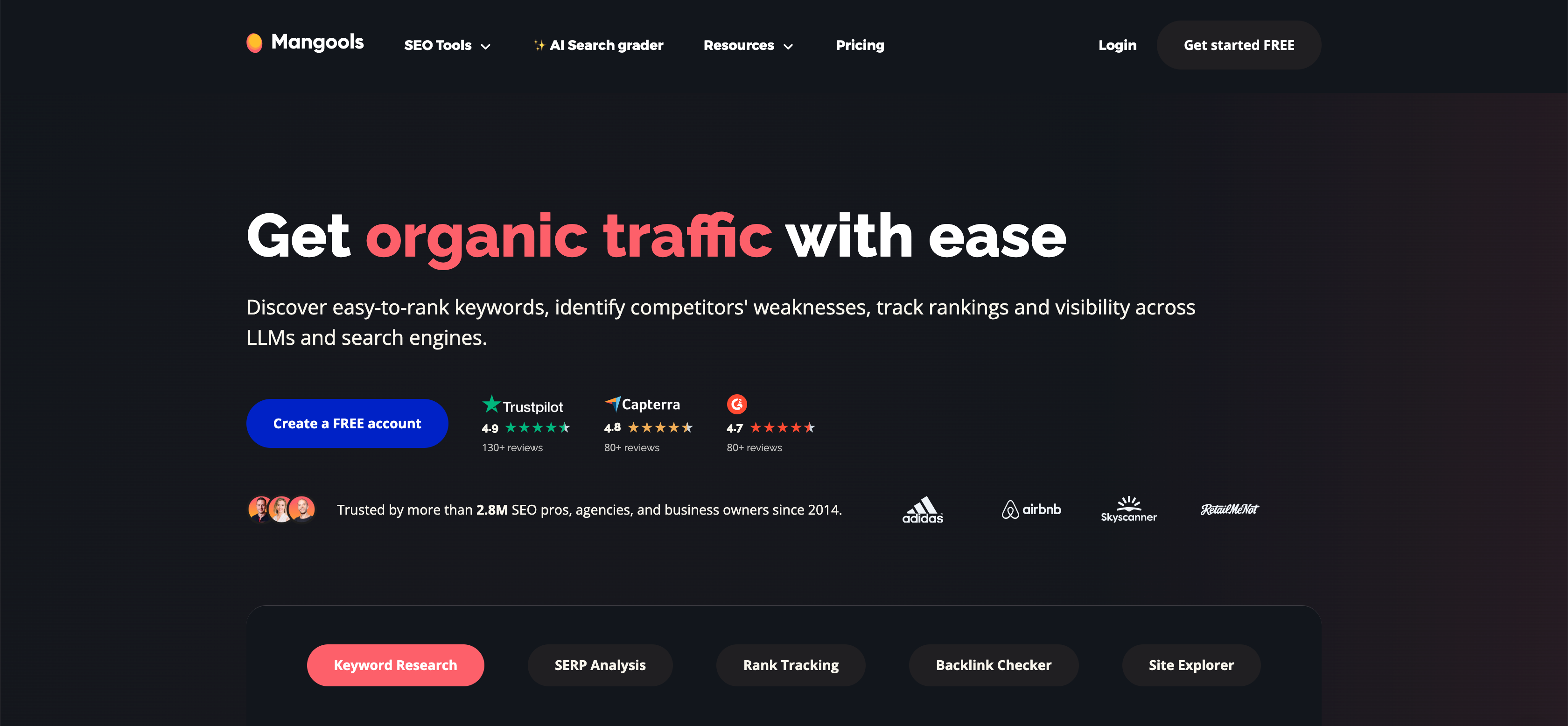Updated: 14 October 2025 • 7 minutes Read
If you’ve ever wondered how websites appear on the first page of Google, the answer lies in three letters — SEO. Search Engine Optimisation is the art (and science) of helping your content get found online.
When I first started creating websites, SEO felt overwhelming — dozens of tools, endless jargon, and shifting algorithms. But once I discovered Mangools, things started to click. It simplified the process, gave me clarity, and helped me understand what really matters when trying to rank higher on Google.
In this beginner’s guide, I’ll show you step by step how to start mastering SEO in 2025, using Mangools’ beginner-friendly toolkit — with tips that are especially useful for Filipino bloggers, entrepreneurs, and small business owners.
Understanding SEO Basics
At its core, SEO helps search engines understand your website’s content so they can show it to the right audience.
SEO revolves around three main pillars:
- Keyword optimisation – Choosing the right search terms your audience is using.
- On-page SEO – Structuring your content and website for clarity and value.
- Off-page SEO – Building authority through backlinks and mentions.
For beginners, you don’t need to master everything overnight. Focus on the basics: understanding your audience, creating helpful content, and optimising pages around specific keywords.
Keyword Research with KWFinder
Keyword research is where every SEO journey begins — and this is where Mangools’ KWFinder shines.
When I first tried KWFinder, I was amazed at how beginner-friendly it was. The interface is clean, intuitive, and colour-coded, showing you exactly which keywords are easy or hard to rank for.
Here’s how I typically use it:
- Enter a broad topic – For example, “WordPress hosting Philippines.”
- Check keyword difficulty (KD) – KWFinder gives a clear score from 0 to 100, where lower numbers mean easier to rank.
- Look at search volume – You’ll see how many people are searching for that term monthly.
- Find long-tail keywords – These are more specific phrases like “affordable WordPress hosting for beginners” that are easier to target.
Once you’ve gathered a few good keywords, you can start crafting content around them — whether that’s a blog post, landing page, or guide.
Pro Tip: Focus on long-tail keywords with moderate volume and low difficulty — that’s the sweet spot for new websites.
On-Page & Content Optimisation
Now that you’ve got your keywords, it’s time to use them smartly.
Here’s how I optimise each post:
- Include the keyword in your title, meta description, and URL.
- Use it naturally in your headings (H2s and H3s).
- Write for people, not just search engines — aim to solve real problems.
- Add internal links to other relevant posts on your site.
Mangools doesn’t just stop at keyword research. Their SERPChecker tool helps you analyse who’s currently ranking for your chosen keywords — so you can understand what kind of content Google favours.
For example, if you see mostly long, in-depth guides ranking on the first page, you’ll know that’s what you need to create too.
Tracking & Monitoring with SERPWatcher
SEO is not a one-time setup; it’s an ongoing effort. That’s where SERPWatcher comes in handy.
After publishing your content, add your tracked keywords in SERPWatcher.
You’ll be able to:
- Monitor your Google ranking for each keyword.
- Get daily updates on movement (up or down).
- See your Dominance Index, a unique metric showing your overall visibility.
When I first started using it, checking SERPWatcher became part of my weekly routine. Seeing my keywords slowly climb up the rankings was incredibly motivating — and when they dropped, it was a signal to tweak my strategy or update content.
Backlink Research with LinkMiner
Backlinks are like online “votes of confidence.” The more trustworthy websites that link to yours, the more authority Google sees your site as having — helping you rank higher in search results.
With LinkMiner, Mangools makes backlink research straightforward — even for beginners.
Here’s how I use it:
- Enter a competitor’s domain.
- Review the backlinks they’ve earned — including source URLs, anchor text, and authority scores.
- Identify opportunities to replicate those links (e.g., by writing guest posts or reaching out for mentions).
This helped me discover which types of content naturally attract links — and which strategies to avoid.
Pro Tip: Don’t chase quantity; aim for quality backlinks from relevant and trusted sites in your niche.
Competitor & Site Analysis
One of the biggest mistakes I made early on was ignoring what competitors were doing. With SiteProfiler, Mangools helps you analyse any domain in seconds.
You can check:
- Domain Authority & Trust Flow
- Top content by backlinks and shares
- Audience geography and referring domains
Studying competitors’ top-performing pages often gives me ideas for my next blog topic — especially when I see content gaps I can fill.
Putting It All Together
SEO may seem complex, but when you break it down using Mangools’ ecosystem, it becomes manageable:
- KWFinder helps you find the right keywords.
- SERPChecker lets you analyse ranking difficulty.
- SERPWatcher tracks your progress.
- LinkMiner helps build backlinks.
- SiteProfiler gives you insight into competitors.
When I started applying this process consistently — researching, writing, tracking, and improving — my blog traffic began to grow steadily. What felt like guesswork became a clear, repeatable strategy.
Next Steps: Start Your SEO Journey Today
If you’re serious about growing your website in 2025, now’s the perfect time to start learning SEO the right way — and tools like Mangools make that journey easier.
You don’t need to be a tech expert or spend a huge budget. All it takes is curiosity, patience, and the right tools to help your website reach more people online — whether you’re running a small business, blog, or personal brand here in the Philippines.
Try Mangools for free today and see how intuitive keyword research and SEO tracking can be.
Get started with Mangools — it’s the same platform that helped me simplify SEO, gain confidence, and finally see real growth in my website traffic.
Final Thoughts
SEO success doesn’t happen overnight — but every keyword you research, every page you optimise, and every link you earn brings you closer to your goal.
Start small, stay consistent, and let Mangools guide your progress one search result at a time — making SEO easier for Filipino bloggers, entrepreneurs, and website owners.
Topics: Reviews
Don’t forget to share this post!



